Spiking Kinematics in Volleyball Players With Shoulder Pain
- PMID: 30657718
- PMCID: PMC6410979
- DOI: 10.4085/1062-6050-216-17
Spiking Kinematics in Volleyball Players With Shoulder Pain
Abstract
Context: Spiking is one of the most frequently used scoring techniques in volleyball games, and around 80% of shoulder pain in volleyball players is linked with the spiking movement.
Objective: To investigate the differences in glenohumeral joint, scapular, and trunk movements during the spiking motion between volleyball players with and those without shoulder pain.
Design: Cross-sectional study.
Setting: University laboratory.
Patients or other participants: Twenty amateur volleyball players with shoulder pain (age = 21.8 ± 1.79 years, with an average of 4.0 ± 0.92 years of volleyball experience and 6.0 ± 3.51 months of shoulder pain) and 20 sex-, age-, and experience-matched control participants.
Main outcome measure(s): The 3-dimensional kinematics of the shoulder joint, scapula, and trunk during spiking were assessed using an electromagnetic tracking system.
Results: Compared with the control group, individuals with shoulder pain demonstrated less scapular posterior tilt ( P = .041) and more glenohumeral horizontal abduction ( P = .008) and scapular internal rotation ( P = .02) at ball contact when performing the cross-body spike.
Conclusions: The decrease in scapular posterior tilt, along with increased glenohumeral horizontal abduction and scapular internal rotation, was associated with shoulder pain in university volleyball players. These changes should be addressed in the training and treatment of young volleyball players.
Keywords: kinematics; shoulder overuse injuries; upper extremity.
Figures

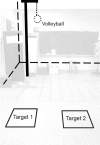
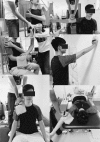

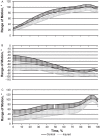
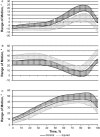
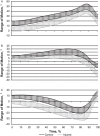
Similar articles
-
Kinetic Chain Exercise Intervention Improved Spiking Consistency and Kinematics in Volleyball Players With Scapular Dyskinesis.J Strength Cond Res. 2022 Oct 1;36(10):2844-2852. doi: 10.1519/JSC.0000000000003904. Epub 2020 Dec 9. J Strength Cond Res. 2022. PMID: 33306587 Clinical Trial.
-
Does the combination of pain and dyskinesis alter scapular kinematics during shoulder elevation with and without elastic resistance?J Bodyw Mov Ther. 2024 Oct;40:403-410. doi: 10.1016/j.jbmt.2024.02.050. Epub 2024 Apr 16. J Bodyw Mov Ther. 2024. PMID: 39593616
-
Lateral scapular slide test and scapular mobility in volleyball players.J Athl Train. 2011 Jul-Aug;46(4):438-44. doi: 10.4085/1062-6050-46.4.438. J Athl Train. 2011. PMID: 21944077 Free PMC article. Clinical Trial.
-
Effect of scapular stabilization during horizontal adduction stretching on passive internal rotation and posterior shoulder tightness in young women volleyball athletes: a randomized controlled trial.Arch Phys Med Rehabil. 2015 Feb;96(2):349-56. doi: 10.1016/j.apmr.2014.09.038. Epub 2014 Oct 23. Arch Phys Med Rehabil. 2015. PMID: 25450120 Clinical Trial.
-
Nontraumatic Shoulder Pain Affects Proprioception and Dynamic Stability in Female High School Volleyball Players.J Athl Train. 2025 Feb 1;60(2):161-169. doi: 10.4085/1062-6050-0413.24. J Athl Train. 2025. PMID: 39726995
Cited by
-
The impact of warm-up with the volleyveilig approach on upper extremity function in female volleyball players.Sci Rep. 2025 Jul 24;15(1):26863. doi: 10.1038/s41598-025-12730-z. Sci Rep. 2025. PMID: 40702076 Free PMC article. Clinical Trial.
-
Ball-To-Hand Contact Forces Increase Modeled Shoulder Torques during a Volleyball Spike.J Sports Sci Med. 2023 Sep 1;22(3):488-495. doi: 10.52082/jssm.2023.488. eCollection 2023 Sep. J Sports Sci Med. 2023. PMID: 37711700 Free PMC article.
-
Epidemiology of Injuries in National Collegiate Athletic Association Women's Volleyball: 2014-2015 Through 2018-2019.J Athl Train. 2021 Jul 1;56(7):666-673. doi: 10.4085/1062-6050-679-20. J Athl Train. 2021. PMID: 34280268 Free PMC article.
-
A Self-Powered Wearable Motion Sensor for Monitoring Volleyball Skill and Building Big Sports Data.Biosensors (Basel). 2022 Jan 24;12(2):60. doi: 10.3390/bios12020060. Biosensors (Basel). 2022. PMID: 35200321 Free PMC article.
-
Reliability and Validity of Measuring Shoulder Internal and External Rotation Strength in Volleyball Specific Positions.Int J Sports Phys Ther. 2025 Apr 1;20(4):532-541. doi: 10.26603/001c.132170. eCollection 2025. Int J Sports Phys Ther. 2025. PMID: 40182905 Free PMC article.
References
-
- Coleman SG, Benham AS, Northcott SR. A three-dimensional cinematographical analysis of the volleyball spike. J Sports Sci. 1993;11(4):295–302. - PubMed
-
- Jacobson RP, Benson CL. Amateur volleyball attackers competing despite shoulder pain: analysis of play habits, anthropometric data, and specific pathologies. Phys Ther Sport. 2001;2(3):112–122.
-
- Aagaard H, Jorgensen U. Injuries in elite volleyball. Scand J Med Sci Sports. 1996;6(4):228–232. - PubMed
MeSH terms
LinkOut - more resources
Full Text Sources

